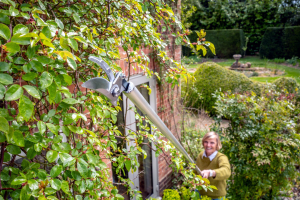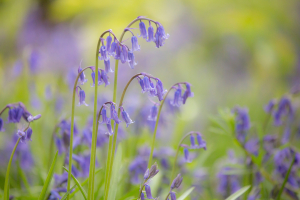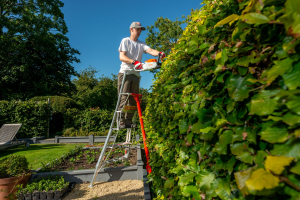How To Prune Roses In The UK with David Austin Roses
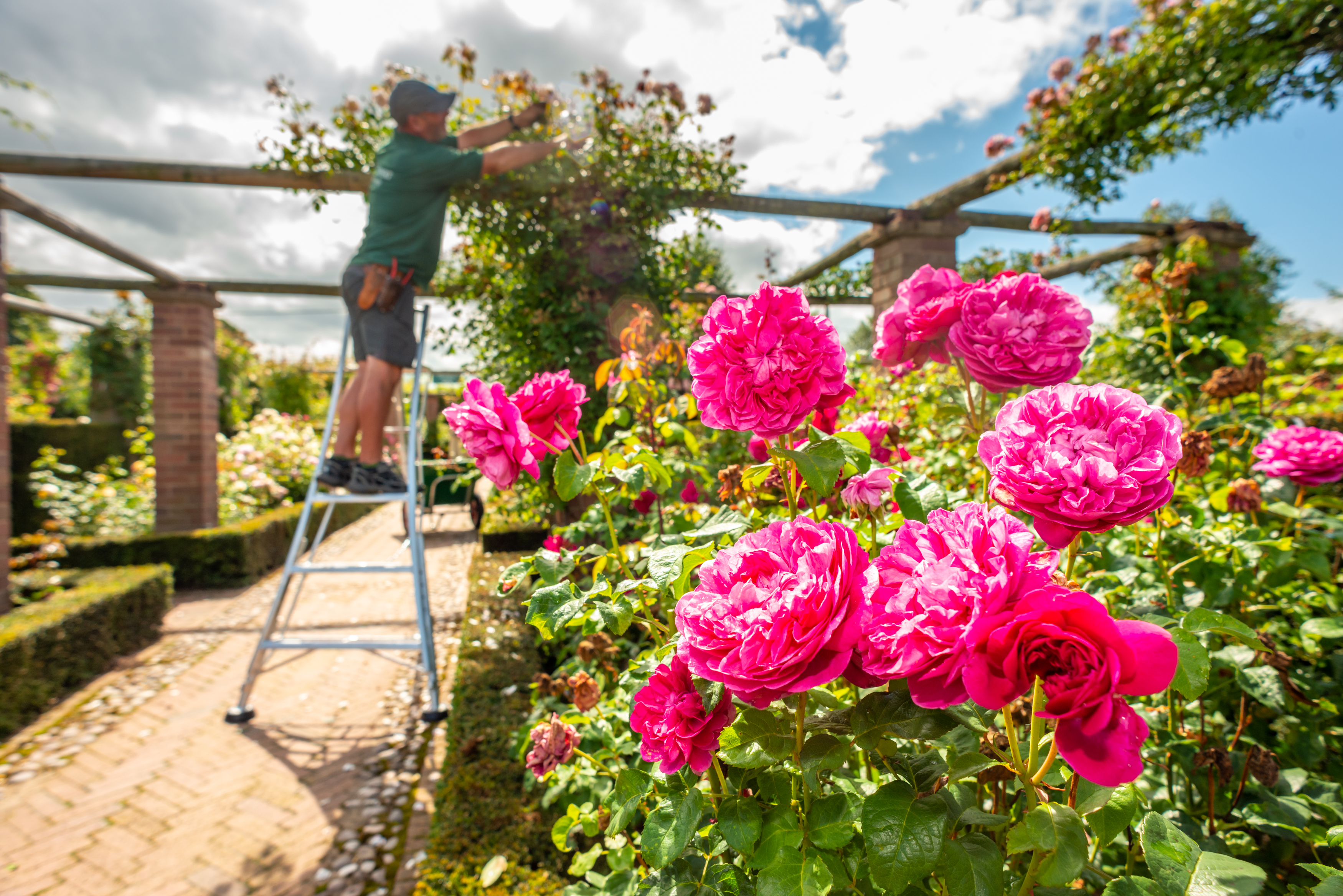
If you want flourishing roses in your garden, then rose pruning is the most important task to tick off your list. Cutting back roses ensures a beautiful bloom throughout the rest of the year.
If this is your first time pruning roses, then you may be unsure of where to start. Luckily, we at Henchman have compiled this handy guide for pruning your roses this season.
Introducing David Austin: Rose Pruning Tips & Tricks
The David Austin team has been breeding roses since the 1950s, growing and creating beautiful roses that gardeners far and wide can enjoy. Renowned for their unique style of roses and their expert rose care advice, we’re delighted to have worked with them on our own rose pruning guide.
“Roses can be used in both formal and informal planting schemes and they encourage wildlife, which in turn provides a happy and healthy garden.
“Combining with perennials in mixed borders, planting as a hedge or even grown in pots and containers, the possibilities are endless. Climbers and ramblers can be used to cover a pergola or an arch, grown into trees or even planted next to a doorway for a delightful entrance to your home.”
Keep reading to hear David Austin’s rose pruning advice.
Why Should You Prune Roses?
Before we cut to the chase, let’s look at why you should prune roses.
Pruning roses lead to stronger, healthier plants throughout the year. As roses are prone to diseases, it’s important to stay on top of diseased or dead stems, flowers and suckers as they can affect your overall plant growth.
Some common rose problems include:
- Rose black spot. This is a disease that results in purple or black splotches on leaves.
- Rose dieback, which happens when the plants experience harsh weather conditions or have not been properly cared for.
- Replant disease, which occurs when a plant is removed and replaced by the same type. This can lead to poor root growth, particularly in roses.
- Various pests, including Rose Aphids and Rose Leaf-Rolling Sawfly.
“If you catch sight of black spot, remove the worst-affected leaves as soon as possible, ensuring any fallen leaves are removed and disposed of. If watering is required, only water around the base of the plant and avoid getting the foliage wet. The best time to water is late evening, especially in the summer months, to avoid scorching. Feed roses with a granular feed in late March / early April, then again after flowering. Additional foliar feeds such as Maxicrop can also help.
“When pruning in winter, prune out any infected stems and congested growth, as well as removing all foliage to allow for better airflow. Once pruning is complete, ensure any debris is removed from the ground below the rose, then mulch. A healthy plant is less likely to be affected by black spot.”
The RHS has more information about rose issues here.
Pruning roses will also keep your rose bushes in shape and your stems strong and healthy.
What Is the Best Time to Prune Roses?
Generally, late winter - February/March - is the best time to prune roses. This is because, for many rose species, growth has slowed and they are not flowering as much. However, this can vary, depending on the type of roses you’re growing and when they were planted.
For example, rambling roses can be pruned in the summer once they’ve flowered, but you can still trim these roses during winter’s peak pruning season to keep them tidy.
Many gardeners prune their roses all year round, they just use slightly different techniques. A small, lighter prune in the summer can be good, so you’re ready for a larger pruning job later in the year. You will find what works best for your roses over the years.
The main thing to remember is to not prune roses too frequently, and to be careful around new flowers or buds. So, ensure that your rose pruning is ticked off your to-do list before they start growing again.
“Different types of roses need different care and attention.
“For an English Shrub, the pruning process varies slightly depending on the age. For a 1-year-old shrub, we’d suggest pruning the rose between 30-45cm from the ground, removing any thin and wispy stems. 2-year-old English Shrubs require pruning back between half and one third, depending on the height. Maintaining the shape is very important here, and make sure you remove any thin weak growth. English Shrubs 3 years and above are likely to have grown to the size and shape you require, so prune 5-10cm above the previous year’s growth, reducing side shoots and get rid of any weak and wispy stems.
“For Old Shrubs, prune after flowering. Cut back the side and main shoots and shorten the longer shoots later on in the summer months.
“Newly planted Climbing Roses need little pruning. Tie in new growth to create a framework and as the rose gets more established, tie in strong stems to encourage flowering shoots. As the rose matures, prune out any older stems or unwanted growth. Continually train in new stems, thin out the weak and shorten any lateral growth.
“Similarly to Climbing Roses, with Rambling Roses you’ll be required to train new growth in the first year and do little pruning. As the rambler matures, tie in new growth and remove any old stems, shortening old flowering side shoots as you go. The level of pruning depends on where they are planted. If planted around a pergola or frame, they will need more pruning in order to stay contained, but if into a tree or over a large building, they require less assistance.”
Rose Pruning Tools
As with all gardening projects, you need the right rose pruning tools to do a good job. Here’s what you should add to your garden toolkit:
- If you’re pruning a climbing rose that has grown quite tall, then you’ll need a quality ladder to reach those awkward areas. According to the Ladder Safety Guide, you need a ladder that’s the right height and length for the job, to avoid overreaching. Henchman’s renowned adjustable tripod ladder will help you stay safe when trimming at height on uneven terrain, so you can work comfortably at the right height level. Rose pruning is a delicate and precise job so you want to be comfortable and confident on your ladder. As you’ll likely be working on grassy terrain or soft mulch, the exposed claw feet will also help keep you stable without having to lean on the plants itself.
- If you want to know how to set up a tripod ladder for pruning, then take a look at our handy guide.
- If you would like to get more done in one go without moving your ladder from one spot to another, then our Hi-Step is the ladder for you. It allows you to work 180 degrees thanks to its large, spacious platform.
- If you'd like more information about staying safe when working at height, take a look at our ladder safety guide.
- When looking for secateurs for pruning roses, bypass secateurs are best suited. They leave a nice, clean cut which your roses can easily heal from. Make sure these are sharp before use.
- If pruning larger stems, use a pruning saw or lopper.
- It’s also a good idea to invest in a quality pair of gardening gloves, so you can protect your hands from scratches and prickly thorns.
- Wear something with long sleeves - you don’t want your clothes getting caught!
“The Henchman Tripod ladders are safe and secure as well as being lightweight and easy to use. It’s great to be able to adjust the legs when working on uneven areas around the gardens.”
How do you prune roses?
Now that you’ve gathered your tools, it’s time to start pruning roses. Here’s our step-by-step guide:
- Deadhead the rose and remove all the leaves - put the debris straight into a bucket or bin. Do not leave any old debris near the plant, you want to avoid carrying over any blackspot/ other diseases into the new season.
- Remove dead stems, snipping at the base until you see live wood. Your cuts should be angled to face downwards to ensure that no water sits on the bud itself. This applies to both removing dead stems and deadheading.
- Remove diseased or damaged stems as above.
- If there are any stems that cross over in the centre of the rose bush, cut them back.
- Cut away weak growth. Signs of poor growth can include spindly stems, poor flowering and wilted leaves - these stems wouldn't be able to carry the weight of a rose in full bloom.
- Remove sucker canes. These stems look different to the rest of the rose bush, have plenty of thorns (if you’re not wearing your gloves, watch out!) and generally grow tall and wild. They steal the nutrients from your roses so you definitely don’t want them hanging around. To remove, follow the stems as far back as you can, moving soil if need be to get to where it’s connected to the rootstock. Cut it as close to the base as possible and seal with a healing product, such as pruning sealer.
- Remove any old, more woody growth, but only if doing so will not significantly thin out the plant.
- If there are stems rubbing against each other, clip away the smallest.
- Finally, shape your rose bush. If you’re aiming for an open shape, then cut any stems pointing inwards. On the other hand, if you want your rose bush to grow upwards, then remove stems growing outwards.
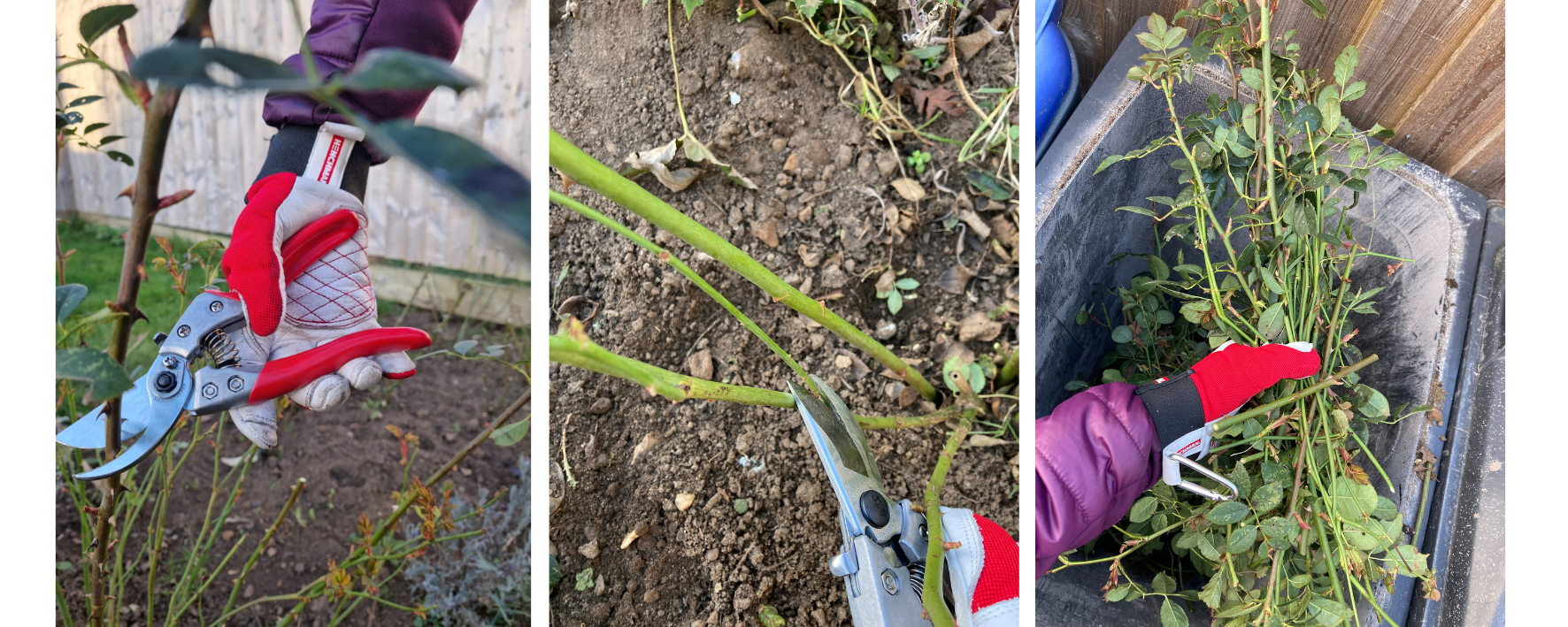
It’s important to note that, if pruning climbing roses, you will need to tie any new shoots as you prune.
If you’re worried about making a wrong cut, missing a few dead branches or over pruning, then don’t panic. What’s great about roses is that they’re strong, robust plants and new growth will fill in any large gaps made from trimming. Practice makes perfect.
Pruning Old, Woody Roses
If you have an old rose bush that’s been neglected and is in serious need of some TLC, then there’s a few things you can do to help it flourish again. Here’s two tips for pruning old, woody roses:
- Usually, the best thing to do is hard prune the roses. Remove any dead stumps and old stems that don’t produce many flowers.
- After hard pruning roses, make sure to water and apply a slow release feed around them, to give them the best chance to thrive in the summer.
“If the rose has reached the height and spread required, light pruning to maintain the shape is all that’s needed. Remembering the rule of removing the 4 D’s as well as encouraging light and air to get into the rose by removing weak growth, will help to keep the rose healthy.
“It’s worth cutting back by half if the rose is unproductive, to help encourage new growth. Continue to feed, mulch and water well during the following year to keep the momentum.”
How to care for roses after pruning
Many rose plants are low maintenance, so when you’re finished pruning your roses, they will flower quickly and fill in any gaps left behind. There are a couple of things you should do to help ensure a successful bloom.
In spring and summer, you should be watering your roses regularly, ideally at least once a week until August. Fresh mulch can be added in the spring. You can also add fertiliser after rose pruning - the RHS recommends either a general, all-purpose fertiliser or a rose-specific one.
Collect any fallen petals off the ground and throw them away. They may be carrying diseases, even if they look perfectly fine, so it's best not to add them to your compost heap. You can also apply bug spray as needed.
Pruning Rose Bushes with Henchman
At Henchman, safety always comes first. That’s why our specialist range of ladders are designed specifically to keep you safe when working at height.
Whether you’re pruning a rambling rose that’s reached the top of the arch, cleaning gutters or trimming hedges, our ladders will keep you stable on uneven ground, making it easier to complete your gardening projects. We also offer gardening accessories, so you can stock up on any equipment you need for your next job.
Head on over to our Ladder and Platforms range to find out more.

